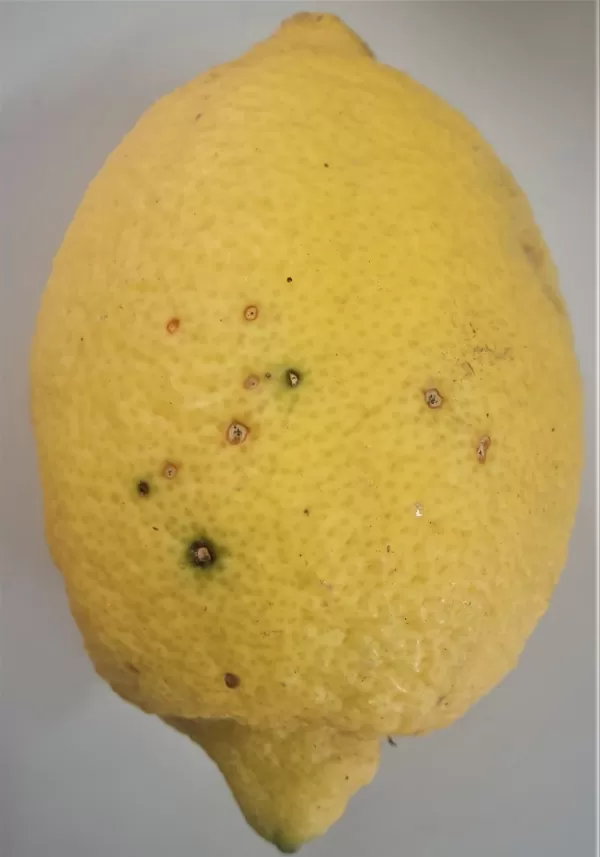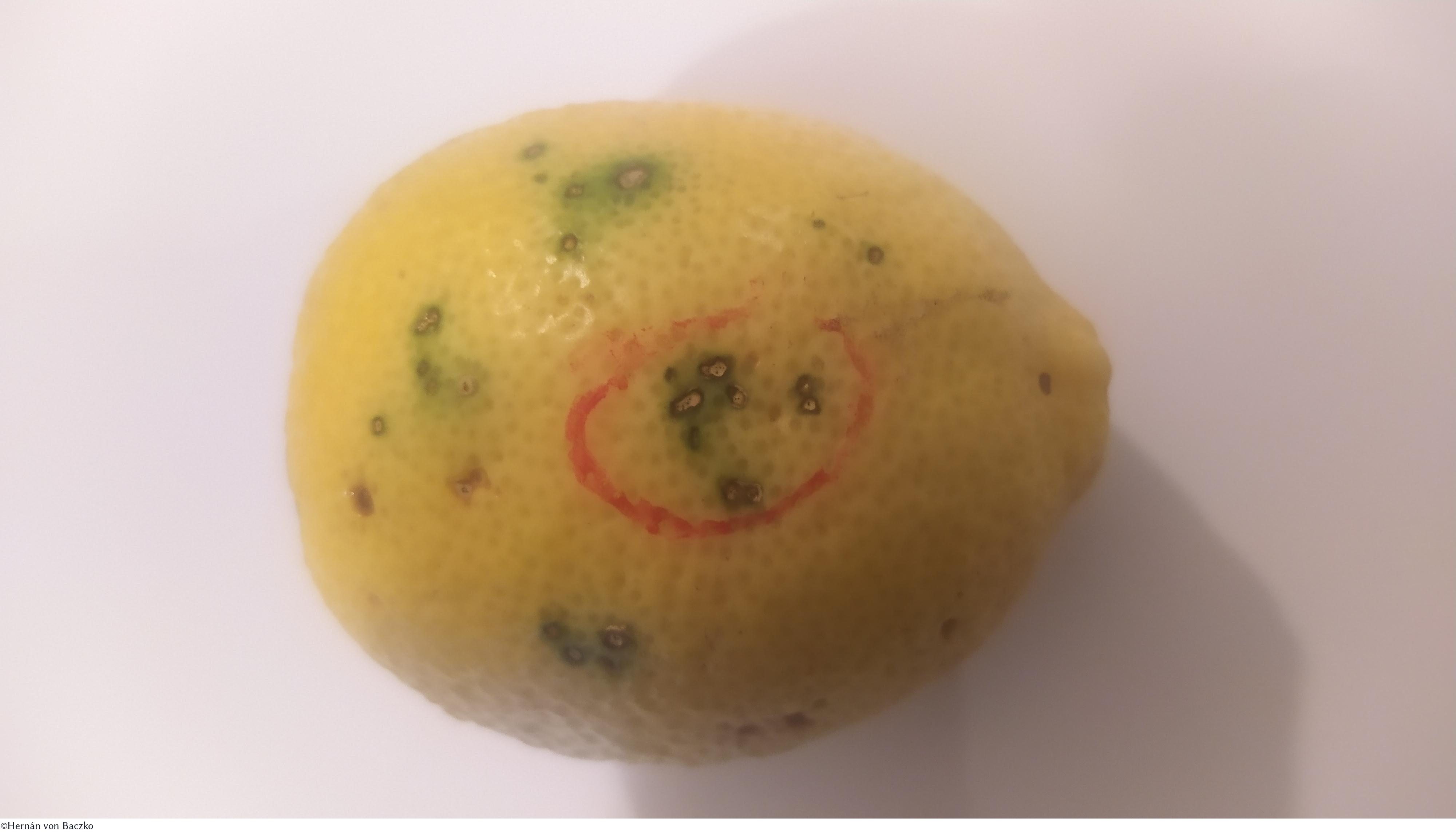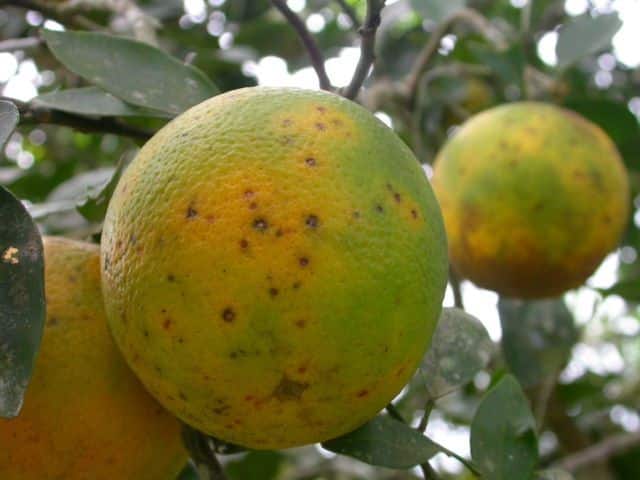
Black Spot
Phyllosticta Citricarpa
Pathogen:
Fungus
Type:
Risk:
INTERMEDIATE
Micosis/Hongos


WHO CAUSES IT?
Phyllosticta citricarpa is a fungal pathogen that causes the disease known as citrus black spot. This fungus mainly affects citrus fruits, such as oranges, lemons and grapefruits. It is characterized by the formation of dark, sunken Taches on the leaves, fruits and stems of affected trees. These Taches can spread quickly and seriously affect plant health and fruit quality.
SYMPTOMS
The disease caused by Phyllosticta citricarpa in citrus initially manifests itself as small brown lesions on the leaves, which eventually enlarge and acquire a dark, almost black color. These lesions may have a lighter border and are often surrounded by a yellow halo. On fruits, the lesions are similar, with dark, sunken Taches that can cover large areas of the surface, affecting their appearance and quality.

TEMPERATURE AND HUMIDITY
25°C - 30°C
80% - 95%
TRANSMISSION PATHS
Rain, wind, contact between plants, infected plant material, contaminated harvest equipment.
Do you want to remove this pest? Choose how you want to treat it.
TREATMENTS
Chemical treatment
• COPPER OXYCHLORIDE 50% (EXPR. IN CU) [WP] P/P
• COPPER OXYCHLORIDE 38% (EXPR. IN CU) [SC] P/V
• CUPROCALCIC SULFATE 20% (EXPR. IN CU) [WG] P/P
Authorized treatments in organic farming
• COPPER OXYCHLORIDE 50% (EXPR. IN CU) [WP] P/P
• COPPER OXYCHLORIDE 38% (EXPR. IN CU) [SC] P/V
• CUPROCALCIC SULFATE 20% (EXPR. IN CU) [WG] P/P
Traitements biologiques
-
Recommendations
To prevent and control citrus black spot, it is recommended to implement integrated pest management practices. This includes proper pruning of trees to improve air circulation, removal of infected plant debris, control of weeds, and use of preventative fungicides. In addition, it is important to maintain good hygiene in the garden and avoid excess humidity in the environment.
Sponsored link
Sponsored link
Sponsored link
Sponsored link
Sponsored link
Sponsored link
Effective against all types of fungi
TREATMENTS
Homemade treatments
There are no home treatments
Natural allies
Chemical treatments
There are no treatments for this disease. Treatments are directed at the insect vectors that transmit it. See insect treatments.
RECOMMENDATIONS
- Check the back of the leaves frequently, especially in dry weather.
- Spray water on the leaves to increase humidity and prevent them from settling.
- Keep plants healthy with good watering and adequate light.
- If you see cobwebs or damage, clean the leaves with a damp cloth or pressurized water.
- Use potassium soap or neem oil every few days until they disappear.
REPELLENT PLANTS
Rosemary, Dill, Coriander
RECOMMENDED PRODUCTS
Sponsored link
Sponsored link
Sponsored link
Sponsored link
Sponsored link
Sponsored link
Effective against all types of fungi
*The recommended treatments are still recommendations according to the databases of the authorities and at no time do they replace the guidelines established according to the legislation of each country
*The products shown are recommendations and are not our own products. As Amazon Associates, we earn revenue from purchases of recommended products.






















